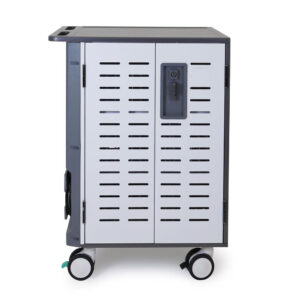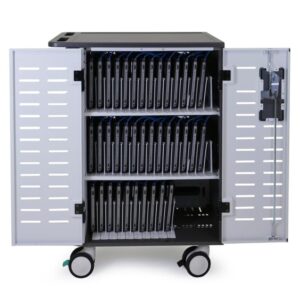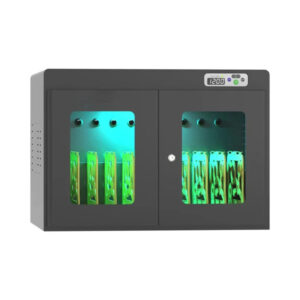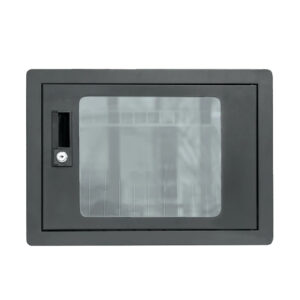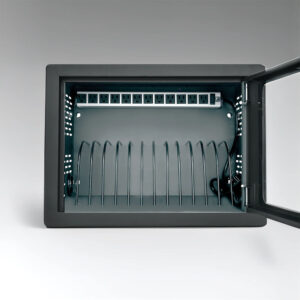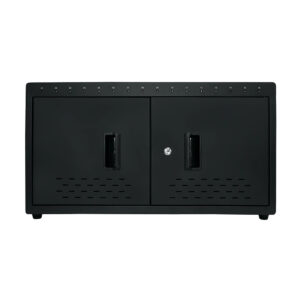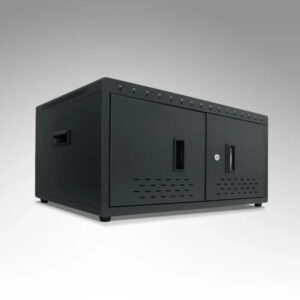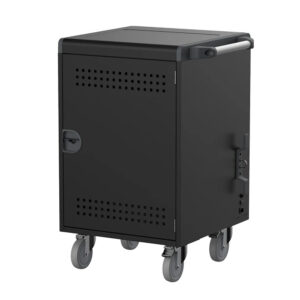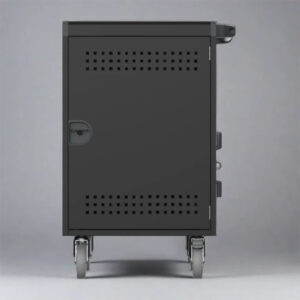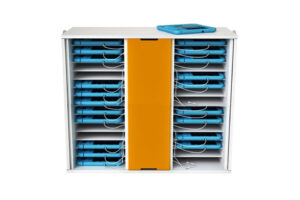Summary
Charging cabinets are specialized storage units designed to securely charge and organize multiple electronic devices in various environments. They have become increasingly important in educational institutions, public spaces, corporate offices, industrial settings, and events, addressing the growing need for efficient device management in our technology-driven society. Their notable presence reflects the rising integration of technology into daily operations, enhancing user experience and operational efficiency by ensuring devices are charged and readily available when needed.
In educational settings, charging cabinets facilitate the seamless use of laptops, tablets, and other digital tools by providing secure charging solutions tailored to the unique layouts of schools and universities. This helps foster a more effective learning environment by minimizing downtime due to uncharged devices. Public spaces, such as airports and malls, also benefit from charging cabinets, offering users convenient access to power sources that alleviate the frustration of low battery life while enhancing overall customer satisfaction.
Corporate environments utilize charging cabinets to support employee productivity by creating designated areas for charging personal devices, ultimately leading to improved work efficiency and morale. Additionally, in industrial settings, these cabinets provide robust and secure charging solutions for tools and equipment, ensuring that devices are charged safely and organized effectively, even under rugged conditions.
Despite their benefits, the deployment of charging cabinets is not without challenges. Issues related to security, user experience, and compliance with safety regulations are crucial considerations that must be addressed to maximize their effectiveness. As technology evolves, the demand for eco-friendly and adaptable charging solutions is also expected to grow, reflecting broader trends towards sustainability and energy efficiency in the design and implementation of charging cabinets.
Table of Contents
Common Locations for Charging Cabinets
Charging cabinets are increasingly utilized in various settings to enhance convenience and organization in the management of electronic devices. These cabinets serve as essential solutions across multiple environments, providing secure charging and storage options for numerous devices.
Educational Institutions
In schools and universities, charging cabinets are vital for facilitating the integration of technology into learning environments. They help manage the charging of tablets, laptops, and other devices used by students and staff, ensuring that devices are fully charged and ready for use when needed. Moreover, educational institutions benefit from customized charging solutions tailored to their unique layouts and traffic patterns, which promote efficient and safe device management while adhering to safety regulations.
Public Spaces
Charging cabinets are widely employed in public spaces such as malls, airports, train stations, parks, and libraries. These cabinets offer users the opportunity to charge their mobile devices conveniently, enhancing their overall experience in these environments. The presence of charging stations in these locations alleviates the frustration of low battery life, thereby improving customer satisfaction and service quality.
Corporate Offices
In corporate settings, charging cabinets serve to support employees by providing a designated area to charge personal devices. This not only enhances work efficiency but also promotes a better user experience, ensuring that employees have access to fully charged devices throughout their workday.
Industrial and Tool Environments
Charging cabinets are specifically designed for rugged environments, including construction sites and workshops, where they are used to securely charge tools and equipment. These cabinets are built to withstand tough conditions while offering organized storage solutions that simplify the charging process in industrial settings.
Events and Gatherings
At events such as conferences, trade shows, and concerts, charging cabinets are deployed to provide attendees with convenient access to charging facilities. This minimizes distractions related to device battery life, allowing guests to remain engaged in the activities at hand.
By effectively addressing the charging needs across diverse environments, charging cabinets play a crucial role in promoting technology utilization and enhancing user experiences.
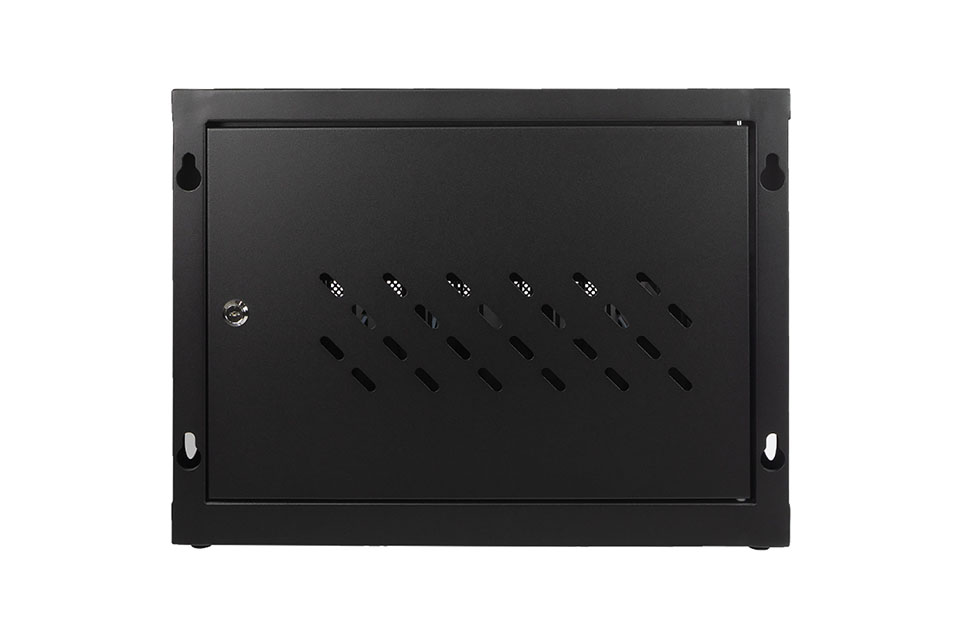
Benefits of Using Charging Cabinets
Charging cabinets offer a range of advantages that enhance the management and usage of electronic devices in various settings, particularly in educational institutions and public areas.
Efficient Device Management
One of the primary benefits of charging cabinets is their role in efficient device management. By providing secure storage and charging solutions, they help prolong the lifespan of devices, leading to lower maintenance costs due to reduced wear and tear. This is particularly valuable in educational settings where multiple devices, such as tablets and laptops, are in constant use.
Eco-Friendly Charging
Modern charging cabinets often incorporate energy-efficient features, such as smart charging technology, which halts charging once devices are fully charged. This not only minimizes energy waste but also supports sustainability initiatives within institutions, contributing to a greener environment.
Customizable Options
Charging cabinets come in various sizes and configurations, allowing educational institutions and businesses to select options that best fit their needs. Whether requiring a compact cabinet for a single classroom or larger units for an entire school, there are scalable solutions available to accommodate the number of devices and available space.
Space Optimization
The compact design of charging cabinets ensures they can fit seamlessly into different environments, optimizing available space. This is especially useful in crowded settings like classrooms or corporate offices, where every square foot counts.
Security Features
Security is another critical advantage of charging cabinets. Many units are equipped with effective locking mechanisms and robust construction, providing peace of mind and protecting valuable devices from theft and damage. This feature is often highlighted by users, particularly in high-traffic environments.
Reliability and Ease of Use
Charging cabinets are designed for reliability and ease of use, which is essential in high-demand settings. Users appreciate intuitive and straightforward operation, facilitating quick access to equipment. As noted by a Director of Technology, the user experience is significantly enhanced by the cabinets’ straightforward design, promoting efficiency in educational environments.
Customer Support
The level of customer support provided by brands also plays a significant role in user satisfaction. Institutions that invest in charging cabinets often value responsive and helpful customer service, especially during installation and troubleshooting.
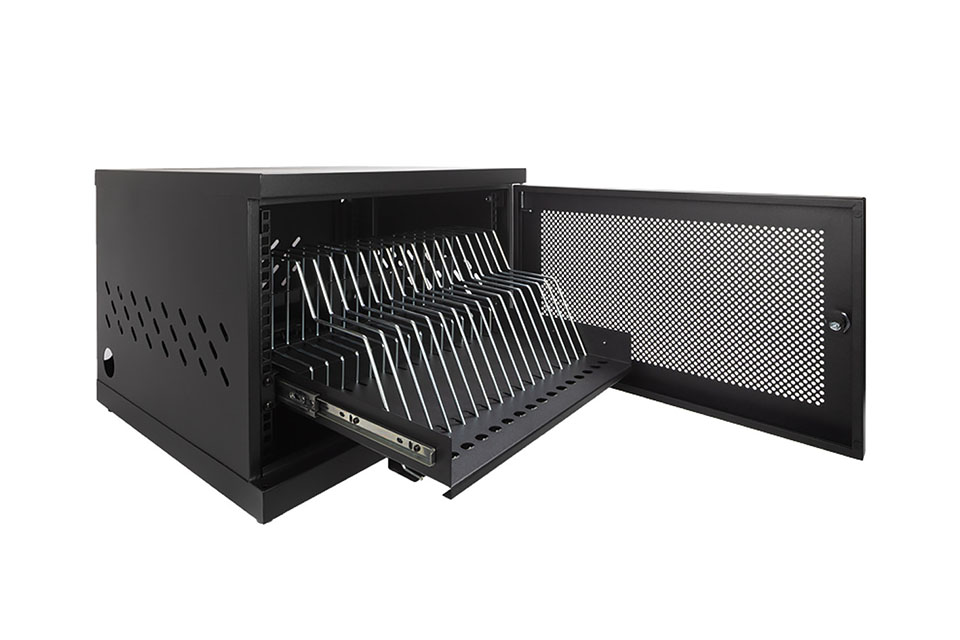
Industries Benefiting from Charging Cabinets
While educational institutions are the primary users of charging cabinets, other sectors also benefit significantly. For instance, healthcare facilities utilize these cabinets to manage devices critical for patient care, while corporate environments rely on them to ensure employee productivity by maintaining a fleet of devices. Furthermore, public spaces such as malls, airports, and parks have adopted charging cabinets to enhance user convenience, providing real-time monitoring and management functions for safe device usage.
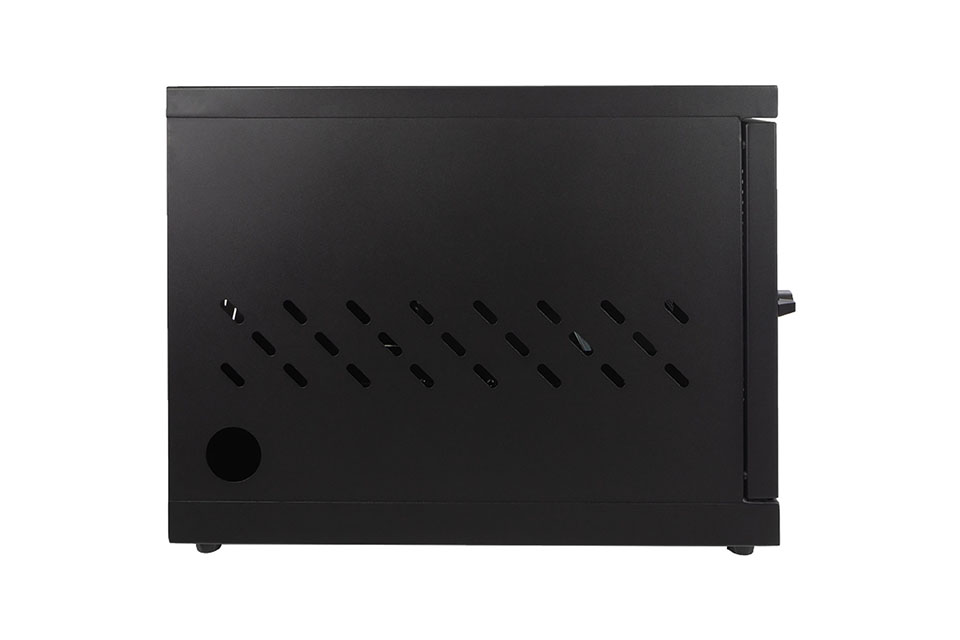
Types of Charging Cabinets
Charging cabinets come in various designs and functionalities tailored to meet the needs of different environments and user requirements.
Battery Charging Cabinets
Battery charging cabinets provide a power strip for charging various devices, including laptops, smartphones, and battery-operated tools. These cabinets offer safe storage and charging solutions, making them ideal for workshops, schools, and public facilities. Many feature locking mechanisms to prevent unauthorized access, ensuring device security.
Mobile Device Charging Cabinets
Mobile device charging cabinets are widely utilized in educational institutions, offices, hospitals, and public venues. These cabinets securely store and charge multiple smartphones, tablets, or laptops, often featuring individual compartments for each device. They are designed to provide efficient device management while ensuring the security of valuable electronic assets.
Industrial and Tool Charging Cabinets
Designed for rugged environments such as construction sites, warehouses, or workshops, industrial and tool charging cabinets are built to withstand harsh conditions. They securely store and charge batteries for power tools or other industrial devices, focusing on durability and safety.
EV Charging Cabinets
Specifically designed for electric vehicles, EV charging cabinets house Level 2 AC chargers or DC fast charging power modules. These cabinets often require robust environmental protection when installed outdoors, making them essential for locations like parking lots and charging stations.
Simple Battery Charging Cabinets
Simple battery charging cabinets primarily focus on the charging function for rechargeable batteries and mobile devices. They typically include one or more 230V sockets and USB charging ports, making them versatile for various applications. While they prioritize ease of use, these cabinets may lack advanced safety mechanisms found in more specialized options.
Public Charging Stations
Public charging stations, which can also be considered a form of charging cabinet, provide charging access in high-traffic areas such as airports, train stations, and shopping malls. These stations vary in complexity and may offer free or fee-based services, catering to the growing demand for mobile device charging in public settings.
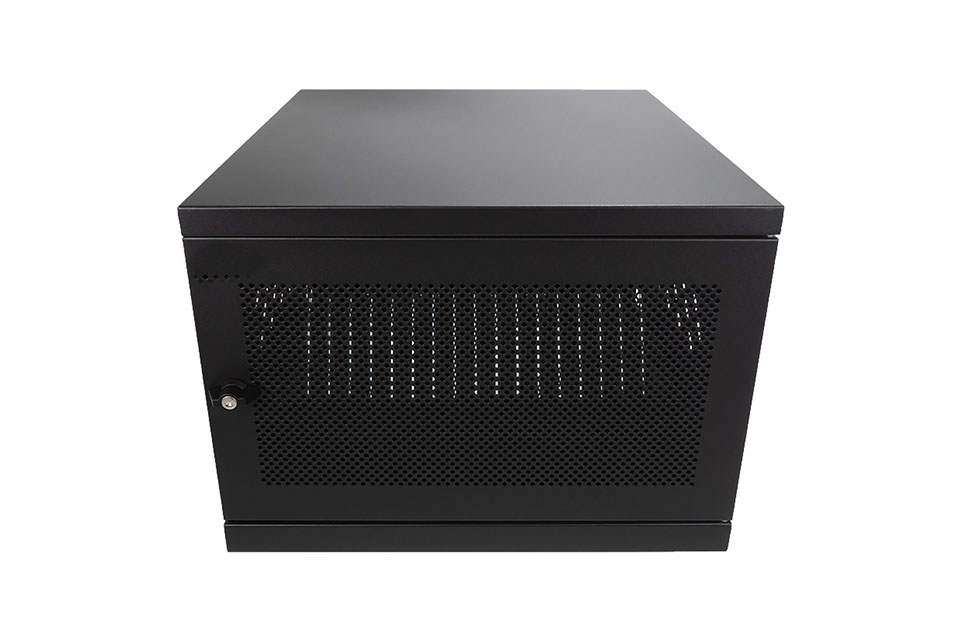
Features of Charging Cabinets
Charging cabinets are specialized storage units designed to securely store, charge, and organize multiple electronic devices simultaneously. They are equipped with various features that enhance their functionality and efficiency in various environments, including educational institutions, workplaces, and industrial settings.
Centralized Charging
One of the primary advantages of charging cabinets is their centralized charging capability. By providing a single location for devices to be stored and charged, these cabinets eliminate the need for scattered chargers and power outlets, ensuring devices are readily available when needed. This centralization is particularly beneficial in environments where multiple devices are utilized regularly, such as classrooms or office settings.
Efficient Power Management
Charging cabinets often incorporate advanced power management technologies, such as smart charging systems that optimize charging speeds and prevent over-charging. This not only extends the battery life of the devices but also ensures that all units are fully charged in the shortest time possible, minimizing downtime and enhancing overall productivity.
Enhanced Organization
The design of charging cabinets promotes effective organization, featuring multiple charging ports, shelves, and compartments specifically tailored for different types of devices. This organized approach reduces clutter and makes it easier to manage numerous devices, particularly in environments where a high volume of electronics is used daily.
Safety Features
Safety is a critical consideration in the design of charging cabinets. Many models are equipped with lockable compartments, providing a secure storage option for devices and preventing unauthorized access. Additionally, some cabinets incorporate fireproof and fire-resistant features, ensuring the safe storage of devices, particularly in industrial environments.
Cable Management
Efficient cable management is another essential feature of charging cabinets. They often include built-in cable organizers or designated compartments to help keep cords tidy and prevent tangling. This not only enhances the aesthetic appeal of the space but also improves airflow and reduces the risk of overheating.
Thermal Management
Many charging cabinets are designed with thermal management in mind, featuring ventilation slots or cooling systems to prevent overheating during charging cycles. This is particularly important in settings where devices are charged continuously or in close proximity to one another.
Durability and Design
Charging cabinets are typically constructed from durable materials to withstand daily use in various environments, including schools, offices, and workshops. Manufacturers offer various finish options that enhance the aesthetic appeal of the cabinets while ensuring they can endure regular wear and tear.
Considerations for Implementation
When implementing charging cabinets in various environments, several factors must be considered to ensure effectiveness and security.
Security Features
Security is a critical consideration, especially in environments like educational institutions where theft is a concern. Effective locking mechanisms, such as key locks, digital keypads, or RFID systems, are vital to preventing unauthorized access to devices stored within charging cabinets. Robust construction of the cabinets also contributes to theft deterrence and protects valuable equipment from damage. The integration of advanced security features fosters a secure environment, giving peace of mind to administrators and users alike.
Safety and Compliance
Ensuring safety in the design and operation of charging cabinets is paramount. Adhering to established electrical codes and standards mitigates risks to users and equipment. Compliance with the Occupational Safety and Health Administration (OSHA) guidelines is essential, particularly regarding worker safety during installation and maintenance. These guidelines dictate the use of personal protective equipment (PPE) and training for handling high-voltage systems. Furthermore, local building codes, zoning laws, and environmental regulations must be strictly followed to avoid legal complications and ensure project approval.
User Experience
Ease of use is a significant factor in user satisfaction. Charging cabinets should be intuitive and straightforward to operate, minimizing complexity for users. Features such as clear labeling, accessible charging ports, and user-friendly interfaces enhance the overall experience, leading to greater acceptance and utilization. Additionally, providing responsive customer support during installation and troubleshooting can significantly impact user satisfaction and confidence in the technology.
Future Growth and Adaptability
As technology continues to evolve, it is essential to consider the future growth of charging needs. Selecting charging cabinets that can accommodate potential increases in device numbers or enhancements in security features is prudent. Institutions should prioritize solutions that are adaptable to changing requirements, ensuring long-term viability and effectiveness in managing technology.
Future Trends
The future of charging cabinets is set to be significantly influenced by regulatory shifts and market dynamics that emphasize sustainability and energy efficiency. As global awareness regarding environmental issues escalates, the demand for eco-friendly charging solutions is anticipated to surge, with projections indicating a compound annual growth rate (CAGR) of approximately 15% over the next five years for intelligent charging solutions.
Technological Advancements
Innovations in charging technology are likely to shape the market landscape, with trends such as charging time optimization, the utilization of wide bandgap technology, and the introduction of wireless charging systems gaining traction. These advancements not only promise faster charging capabilities but also improve user experience by providing greater convenience. The integration of smart technology will facilitate the development of customizable charging cabinets, allowing users to tailor their charging experience according to their specific needs.
Eco-Friendly Solutions
Sustainability will remain a pivotal consideration in the evolution of charging cabinets. The incorporation of renewable energy sources, such as solar and wind power, into charging infrastructure is essential for minimizing the carbon footprint associated with electric vehicle (EV) usage. Charging stations powered by green energy will contribute significantly to reducing greenhouse gas emissions and aligning with global sustainability objectives. As the market progresses, we can expect the rise of charging solutions constructed from recycled materials, ensuring that environmental responsibility is integrated into design and functionality.
Market Dynamics and Consumer Preferences
The increasing adoption of electric vehicles is anticipated to further fuel the demand for charging cabinets. As consumers become more eco-conscious, they are likely to favor charging solutions that align with their values regarding sustainability and environmental impact. The development of public charging stations, which may offer free services or charge fees based on convenience, will also influence consumer behavior and charging habits.



